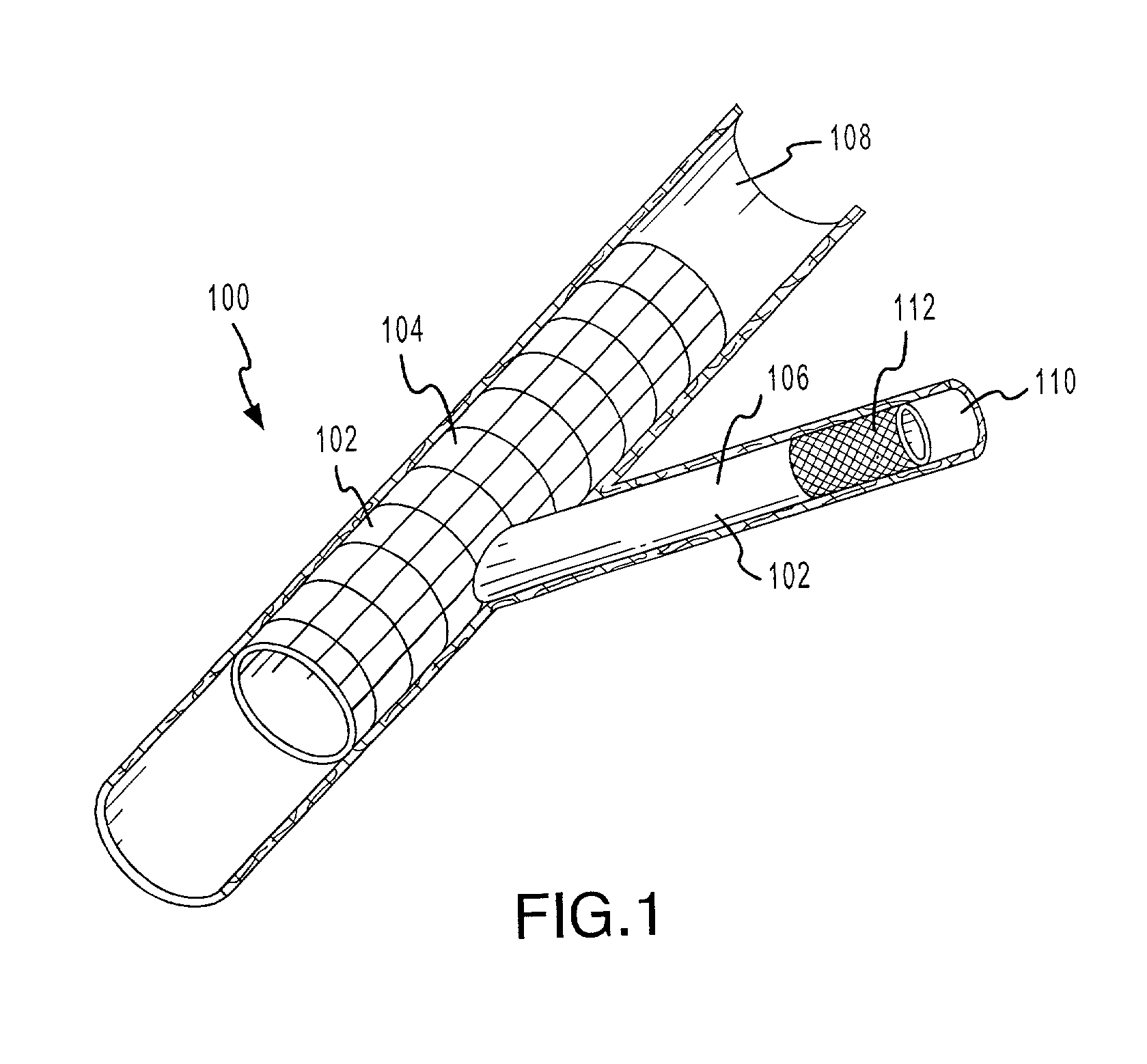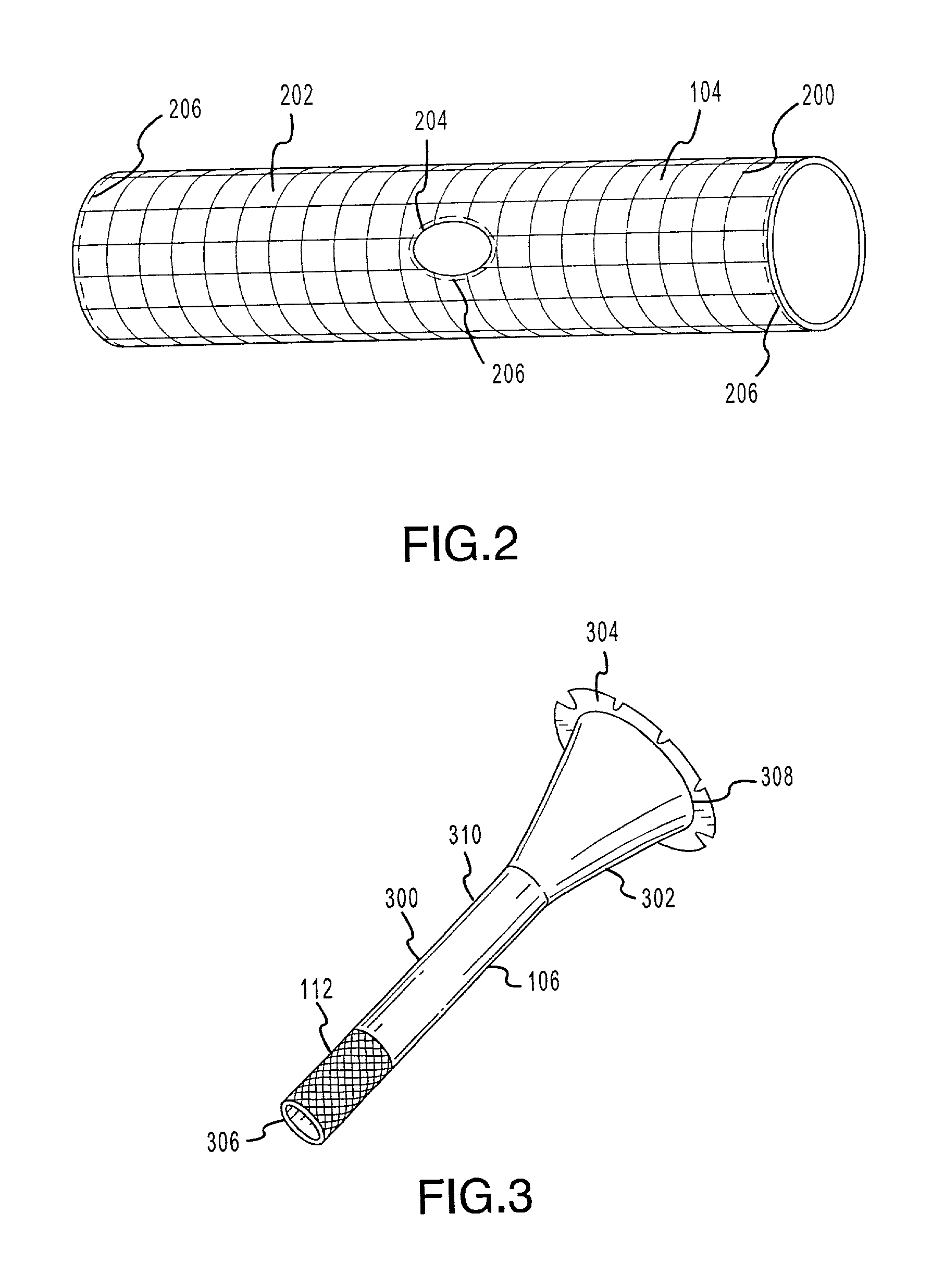Apparatus and methods for conduits and materials
a conduit and conduit technology, applied in the field of medical devices and materials, can solve the problems of blood vessels, excessive dilatation, and ultimately ruptur
- Summary
- Abstract
- Description
- Claims
- Application Information
AI Technical Summary
Benefits of technology
Problems solved by technology
Method used
Image
Examples
example
[0118]To demonstrate the characteristics of a preferred embodiment of a circumferentially distensible tube, a 1.2 mm inner diameter film-tube was created using essentially the same process as described above. A 230×45 mm rectangular piece was cut from Solupor 7P03A microporous polyethylene film and wrapped around the circumference of a 4 mm outer diameter stainless steel mandrel. With the wrapping complete, both ends of the 230 mm long wrapped film section were secured to the mandrel with wire. Porous polytetrafluoroethylene film was helically wrapped over the 230 mm long wrapped film section, covering the section entirely. The 4 mm mandrel was then placed in an air convection oven set at 143° C. for 7.5 minutes and subsequently removed and allowed to cool. Once cool, the helically wrapped porous polytetrafluoroethylene film as well as the securing wire were removed and discarded. The resulting 4 mm inner diameter polyethylene tube was then removed from the 4 mm outer diameter mandr...
PUM
 Login to View More
Login to View More Abstract
Description
Claims
Application Information
 Login to View More
Login to View More - R&D
- Intellectual Property
- Life Sciences
- Materials
- Tech Scout
- Unparalleled Data Quality
- Higher Quality Content
- 60% Fewer Hallucinations
Browse by: Latest US Patents, China's latest patents, Technical Efficacy Thesaurus, Application Domain, Technology Topic, Popular Technical Reports.
© 2025 PatSnap. All rights reserved.Legal|Privacy policy|Modern Slavery Act Transparency Statement|Sitemap|About US| Contact US: help@patsnap.com



